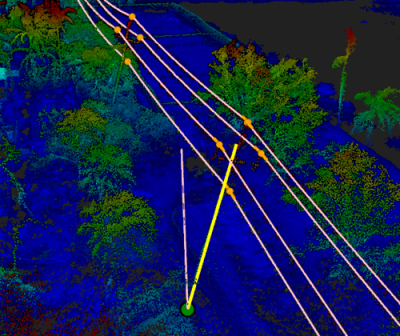SUNNYVALE, Calif. – Last week, Trimble and Faro announced a new OEM and distribution agreement that will see Faro providing Trimble “with an OEM differentiated product” based up the Focus3D. Trimble will offer the OEM product throughout its worldwide networks, and Trimble will have access to any future versions of the Focus3D that might hit the market.
Trimble is not new to OEM agreements in the laser scanning space. Its Trimble FX scanner is created out of an OEM agreement with scanner manufacturer Surphaser. How will this agreement affect the Surphaser agreement, and how did that relationship inform the creation of this new agreement with Faro?
“This does not have any impact on our relationship with Surphaser,” said David Fitzpatrick, general manager of Trimble 3D Scanning, in a telephone interview. “We see these two products addressing different customer needs. The Faro provides a very cost-effective solution for our customers. It’s a great product, especially for the new user. I think the Trimble FX is one of, if the most accurate scanner on the market for its ranges and really serves a very different customer set at the higher end of the service provider spectrum that really require that higher end accuracy.”
With Surphaser, agreed Trimble oil, chemical, and gas market manager Tim Lemmon, “We’re talking about the high end, not necessarily industrial metrology, but that high-accuracy plant-style environment. For general, every day use, Faro is really a cost-effective way to get into scanning.”
As for what Trimble learned from the Surphaser agreement, Fitzpatrick said, “it helped us understand some of the challenges and needs that an OEM relationship requires. How do we ensure that we have distinctive markets and maximize our respective channels and by extension reduce any potential channel conflicts that may exist? Every once in a while there will be an overlap, but with clear constructs from the beginning we’ve been successful in navigating those areas.”
Fitzpatrick said Trimble wasn’t yet ready to go into how the product it brings to market will be differentiated.
However, he did say he thought the new scanner offering would provide access into markets that are relatively or wholly new for Trimble. “The architecture space, absolutely,” Fitzpatrick said, “the building contractor, the historical preservation market, certainly, although that’s not a place that Trimble has played really deeply.” He also said the scanner would complement Trimble’s Visual Statement software offering, which serves the crash scene investigation and forensics marketplace.
And that’s in addition to Trimble’s traditional survey space.
Further, Trimble has recently made a major commitment to the BIM space, and Fitzpatrick said, “we absolutely see the Faro relationship being a complement to our BIM strategy, and we would be looking to develop and introduce solutions that leverage this relationship.
“In general,” agreed Lemmon, “we want to supply the best, most-complete solution for our customers that we can; the quickest way to get to an end result.”
Finally, both Fitzpatrick and Lemmon emphasized that just because Trimble has entered into these laser scanning OEM agreements doesn’t mean the company won’t continue to develop its own solutions.
“Trimble remains extremely committed to the terrestrial scanning market,” Fitzpatrick said. “We continue to have R&D efforts in that space, though I can’t go into any specifics.”
For that, and for what the Trimble-sold Focus3D scanner looks and performs like, the market will have to wait and see.
For Faro’s perspective on the agreement, look for an interview with Faro CEO Jay Freeland in the next edition of SPARView.





